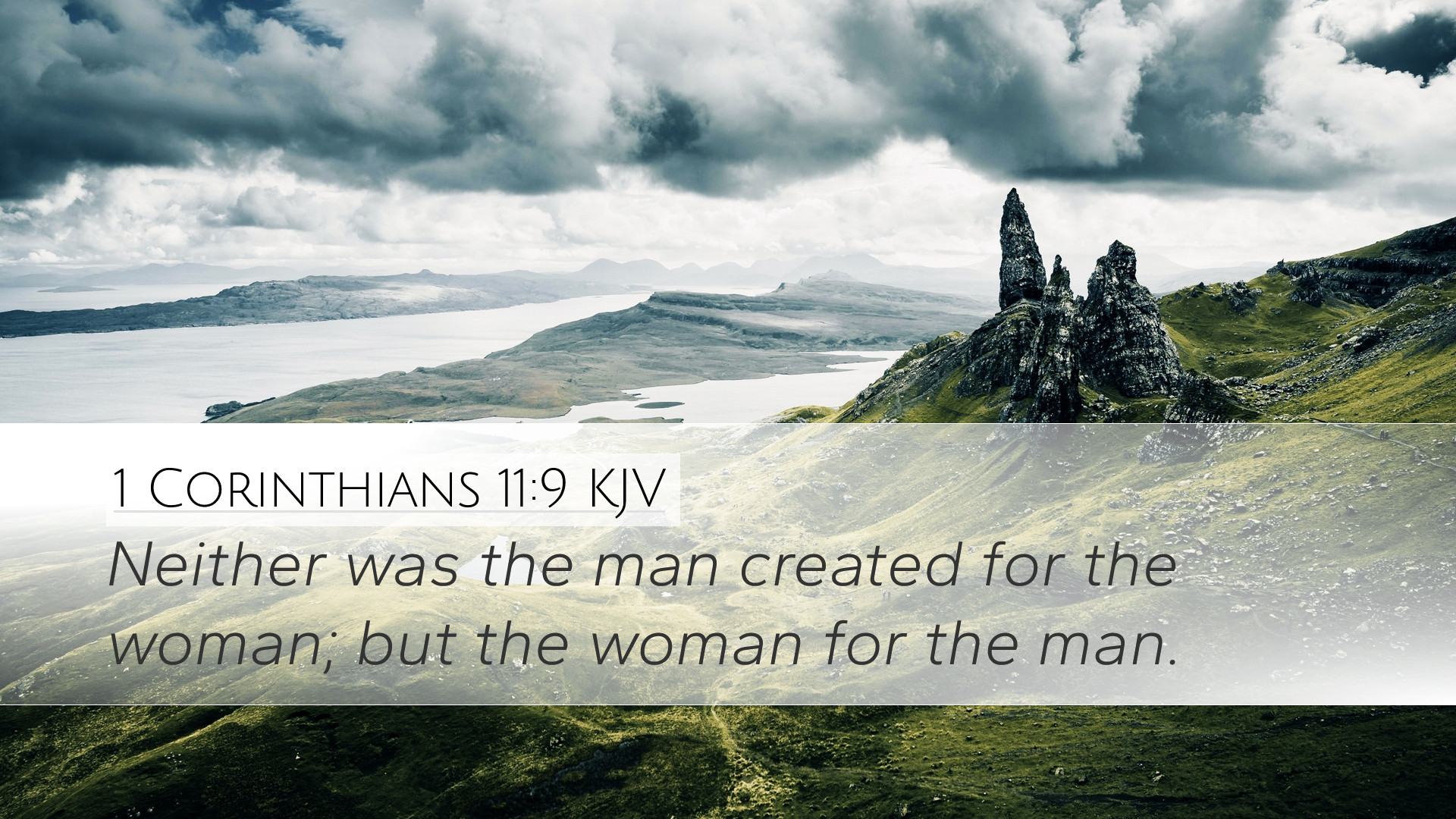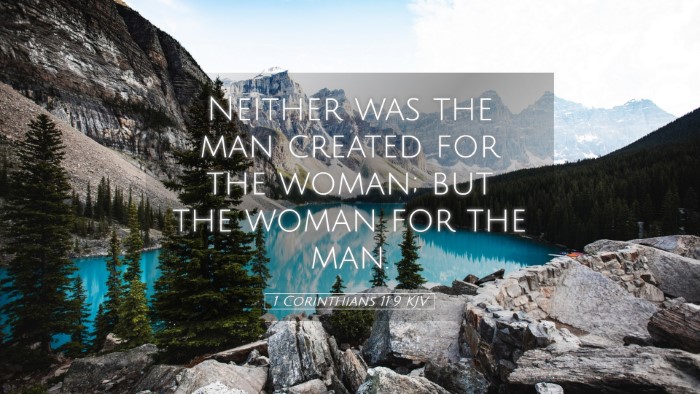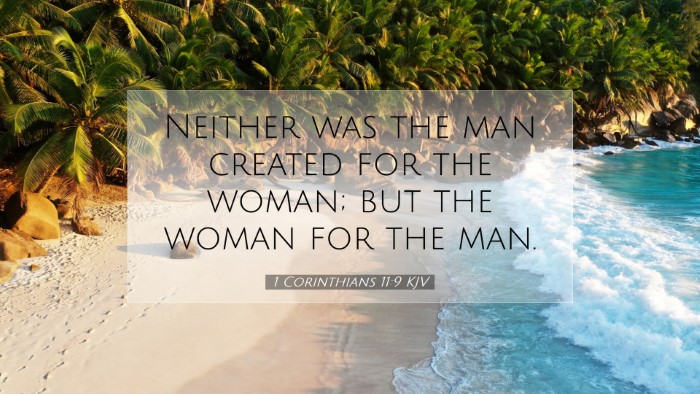1 Corinthians 11:9 Commentary
Bible Verse: 1 Corinthians 11:9 - "Neither was the man created for the woman; but the woman for the man."
Introduction
This verse from the Apostle Paul addresses the relationship between men and women within the context of creation, offering profound implications for understanding gender roles in both the church and society. The historical and theological contexts provide rich insights into this passage.
Contextual Overview
Paul’s first epistle to the Corinthians deals with numerous issues prevalent in the church at Corinth. Among them, the roles and distinctions between genders are pivotal, especially regarding worship practices. The Apostle Paul addresses these issues with pastoral care and theological depth.
Historical Context
In ancient Corinth, a city marked by cultural diversity and moral ambiguity, the roles of men and women were influenced by Greco-Roman customs. Paul’s letter addresses the disruption caused by the influx of new ideas concerning women's rights and roles, emphasizing a biblical order that stems from creation.
Theological Insights
The theological implications of 1 Corinthians 11:9 can be discussed through several lenses:
- Creation Order: The apostle emphasizes that man was created first, setting a precedence for authority and role in the marital and church hierarchy. This is explored by Matthew Henry:
“The woman, being made of the man, and for the man, is a reason why the man should not be covered, but that the woman should cover her head, as signifying her subjection.”
- Purpose of Creation: Paul articulates that the woman’s creation from man was designed to be a companion for him, reflecting God’s intention for partnership and support. According to Adam Clarke:
“The very phrase ‘for the man’ indicates the divine purpose of companionship in the economy of creation, suggesting that woman was made to fulfill roles that are complementary to those of man.”
- Spiritual Equality: Despite establishing a created order, Paul does not undermine the spiritual equality of men and women. Albert Barnes notes:
“This does not imply inferiority, but rather a functional differentiation within the unity of the body of Christ.”
Pastoral Applications
In considering the relevance of this passage today, pastors and theologians must grapple with the implications of gender roles within the church and home. The following applications can be observed:
- Understanding Authority and Submission: Pastors should teach that authority and submission are not statements of worth but rather expressions of order within the community. This principle must be balanced with mutual respect.
- Encouraging Healthy Relationships: 1 Corinthians 11:9 opens discussions regarding the importance of cooperation between genders, urging men and women to support their respective roles while promoting a spirit of unity.
- Addressing Cultural Influences: The church must remain vigilant against cultural trends that might seek to redefine gender roles outside biblical parameters, ensuring scripture remains the foundation for its teachings.
Conclusion
1 Corinthians 11:9 serves as a vital cornerstone for understanding God’s design for men and women. It articulates the distinct roles intended in creation while affirming the value and dignity of both genders. Matthew Henry sums it well:
“The woman is the glory of the man; they are co-workers in the divine plan, complementing each other in the great tapestry of God’s purpose.”
As the church navigates contemporary issues surrounding gender, this verse invites reflection on the harmony intended in creation, challenging us to embrace our God-given roles with grace and understanding.


